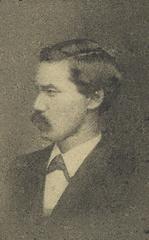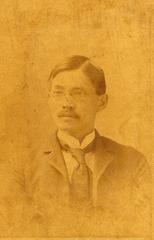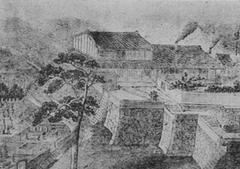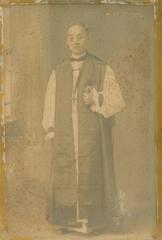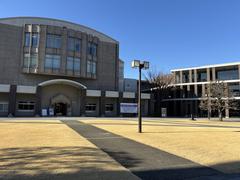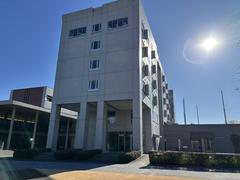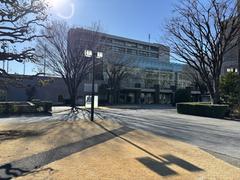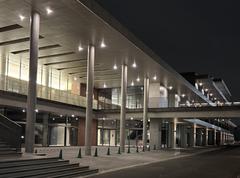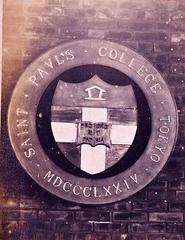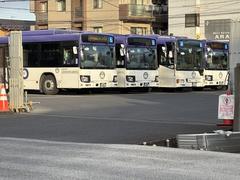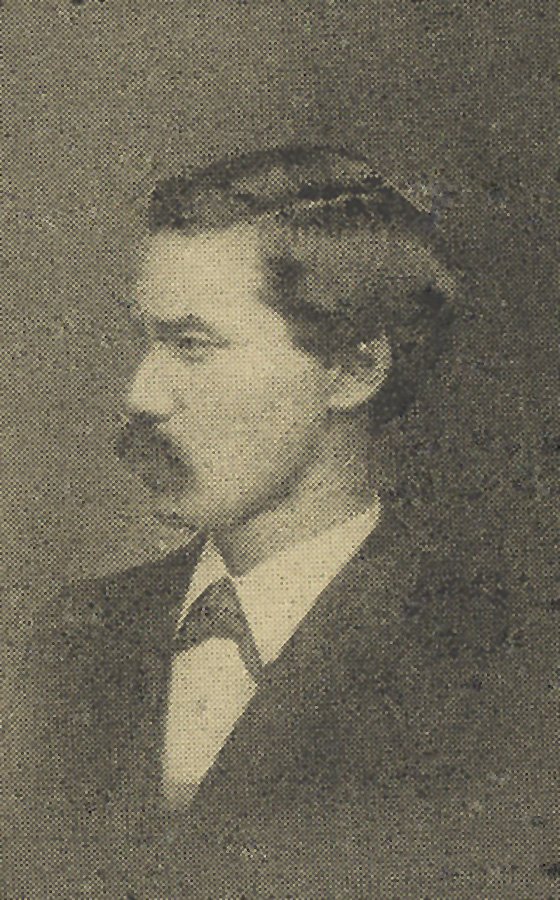
Rikkyo University Tokyo: Visiting Hours, Tickets, and Historical Sites Guide
Date: 14/06/2025
Introduction
Rikkyo University, also known as Saint Paul’s University (立教大学, Rikkyō daigaku), is one of Tokyo’s most renowned academic institutions, celebrated for its historical architecture, lush gardens, and vibrant student culture. Located in the bustling Ikebukuro district, it stands as both a symbol of Japan’s educational modernization and a living testament to the country’s international and cultural evolution. Whether you’re a history buff, architecture enthusiast, or prospective student, visiting Rikkyo University offers a unique window into Tokyo’s rich past and dynamic present.
This guide provides comprehensive information on visiting hours, ticketing, campus highlights, accessibility, guided tours, and nearby attractions, ensuring you make the most of your visit.
Historical Overview
Founding and Early Years (1874–1918)
Established as the Rikkyo School in 1874 by Bishop Channing Moore Williams, an Episcopal Church missionary, the university originally operated in the Tsukiji Foreign Settlement. It was among the first institutions in Japan to provide education in Bible studies and English, serving both Japanese students and foreign nationals. Despite setbacks such as a fire in 1876 and the 1894 earthquake, it rebuilt and expanded its facilities, marked by distinctive brick buildings and a prominent spire (Rikkyo University Official History; Old Tokyo).
Transition and Growth (1918–1945)
In 1918, the university relocated to Ikebukuro, then a developing suburb, where the iconic Morris Hall was constructed. Officially recognized as a university in 1922, Rikkyo adopted a liberal arts model rooted in its Anglican heritage, maintaining the motto “Pro Deo et Patria” (“For God and Nation”) (Times Higher Education; Rikkyo Vision). The campus survived the devastations of World War II, including bombings that left several key historical buildings intact (Old Tokyo).
Postwar Expansion and Modernization (1945–2000)
Postwar years saw Rikkyo become co-educational and expand its faculties, eventually joining the elite “MARCH” group of private universities in the Kanto region and the “Tokyo Big Six” for academics and sports (Wikipedia; Ulethbridge). The university remains affiliated with the Anglican Episcopal Church, retaining its chapels and overseeing international and domestic schools (Times Higher Education).
Internationalization and Recent Initiatives (2000–2025)
Rikkyo’s global engagement accelerated after its selection in 2014 for Japan’s “Top Global University Project,” aiming to increase international students and build worldwide partnerships (Experience Japan). Programs such as the Global Liberal Arts Program (GLAP) and various support initiatives for international students reflect its commitment to diversity. In 2024, Rikkyo celebrated its 150th anniversary, highlighting its creative contributions and educational leadership (Rikkyo Vision).
Visiting Rikkyo University: Practical Information
Visiting Hours and Access
- Ikebukuro Campus Hours: Generally open Monday through Friday, 9:00 AM to 5:00 PM. Some campus gardens and public areas may be accessible until 6:00 PM.
- Location: A 7–10 minute walk from Ikebukuro Station, served by multiple JR, Tokyo Metro, Seibu, and Tobu lines (Flying Chalks).
Always check the official Rikkyo University website for the latest updates on opening hours or special closures.
Admission and Tickets
- Campus Entry: Free of charge for general campus exploration, including outdoor areas and notable buildings like Morris Hall and St. Paul’s Chapel.
- Special Exhibitions/Tours: May require advance booking and a nominal fee, particularly for access to sites like the Edogawa Rampo Residence.
Accessibility
- Mobility: The campus is wheelchair accessible with ramps, elevators, and accessible restrooms in major buildings.
- Support Services: Visitor centers and the Students with Disabilities Support Office (Building No. 12) provide additional assistance (Rikkyo University Facilities).
Guided Tours and Events
- Guided Tours: Available by appointment, covering historical, architectural, and cultural highlights. Contact the visitor center in advance.
- Annual Events: St. Paul’s Festival (autumn) features student performances, food stalls, and academic showcases and is open to the public (Wikipedia).
Campus Highlights
Architectural and Historic Landmarks
- Morris Hall (Main Building): Iconic red-brick structure built in 1919, featuring a hand-wound English Dent Company clock. A designated historical building and campus centerpiece (Virtual Campus Tour).
- St. Paul’s Chapel: Classic design, popular with visitors for photography and quiet reflection.
- Edogawa Rampo Residence: Former home and library of the famous mystery novelist, open by appointment.
- Mather Library Memorial: Exhibition hall with historical archives.
- Sycamore Avenue: Tree-lined walkway, especially beautiful in spring and autumn.
Modern Facilities
- Media Center (Building No. 8): Digital resources and study spaces.
- Student Life Facilities: Cafés, bookstores, and dining halls such as Restaurant Ivy and Tokyo Halal Deli & Cafe.
- Athletic Center: Gym, pool, and sports courts (primarily for students but accessible during events).
Cultural and Academic Centers
- Global Lounge (McKim Hall): Space for international exchange and support for international students.
- Center for Japanese Language Education (CJLE): Language and cultural programs for non-Japanese speakers.
Nearby Attractions in Ikebukuro
- Sunshine City: Shopping, dining, aquarium, and observation deck (Tsunagu Japan).
- Otome Road: Anime and manga shops.
- Tokyo Metropolitan Theatre: Concert and performance venue.
- Themed Cafés: Unique animal cafés, including owls and cats.
Seasonal Highlights
- Spring: Cherry blossoms create a stunning campus landscape.
- Autumn: Vibrant foliage colors the grounds.
- Winter: Christmas illuminations enhance the historic buildings.
Frequently Asked Questions (FAQ)
Q: What are the standard visiting hours?
A: The Ikebukuro campus is open Monday–Friday, generally 9:00 AM to 5:00 PM. Check the official website for updates.
Q: Is there an entrance fee?
A: Admission to the campus is free. Some special exhibitions or tours may require tickets.
Q: Are guided tours available?
A: Yes, by appointment. Contact the visitor center or check the website for current offerings.
Q: Is the campus accessible for visitors with disabilities?
A: Yes, with ramps, elevators, and support services available.
Q: How do I reach Rikkyo University?
A: A short walk from Ikebukuro Station, accessible by multiple train and subway lines.
Insider Tips
- Best Photo Opportunities: Morris Hall, St. Paul’s Chapel, Sycamore Avenue, and campus gardens in spring or autumn.
- Dining: Main dining hall (Daiichi Shokudo) is open to visitors, offering affordable Japanese meals.
- Campus Map: Download or pick up a map at the main gate for easy navigation.
- Festivals: Visit during St. Paul’s Festival or open campus events for a lively atmosphere.
Visual Highlights
- Morris Hall with ivy and seasonal blooms (alt: “Rikkyo University Morris Hall historic building”)
- St. Paul’s Chapel framed by cherry blossoms (alt: “Rikkyo University St. Paul’s Chapel with cherry blossoms”)
- Sycamore Avenue in autumn (alt: “Rikkyo University campus Sycamore Avenue autumn leaves”)
Virtual tours and image galleries are available on the Virtual Campus Tour.
Conclusion
Rikkyo University is a multifaceted destination that beautifully blends history, culture, and modern academic life. Its open campus, historic landmarks, and welcoming atmosphere make it one of Tokyo’s premier sites for visitors seeking to experience Japanese educational heritage firsthand. With free admission, rich traditions, and easy access via Ikebukuro Station, it’s a must-see for travelers of all interests.
For the latest visitor details, guided tour information, and event schedules, always refer to the official Rikkyo University website.
To enrich your experience, download the Audiala app for curated audio guides, and follow us on social media for travel tips and real-time updates.
